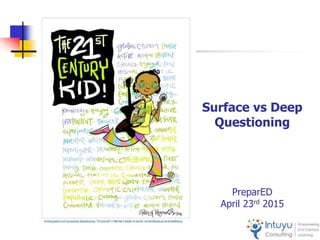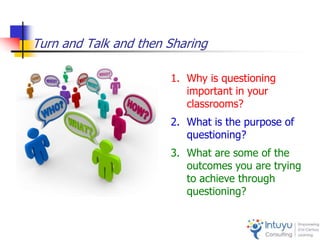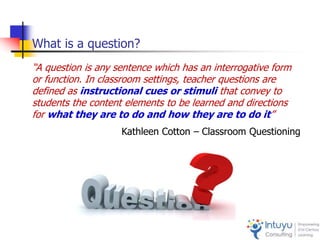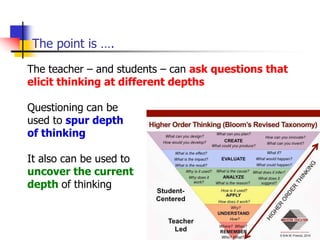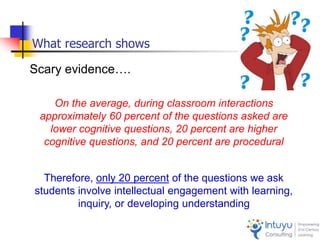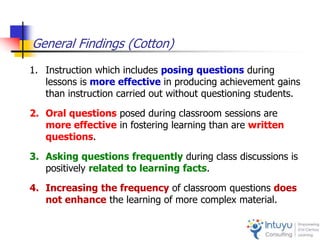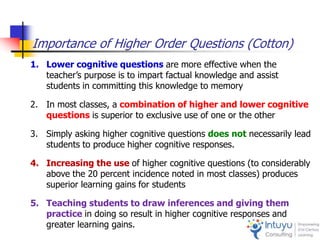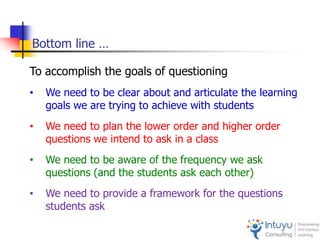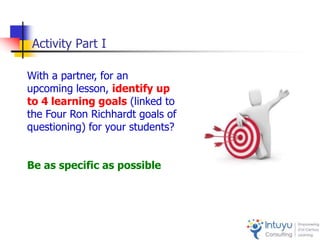The document outlines a workshop focused on the importance of questioning in the classroom, emphasizing the need for teachers to utilize both surface and deep questions to enhance student engagement and learning outcomes. It highlights strategies for effective questioning, including the use of wait times and the balance between lower and higher cognitive questions. The workshop aims to provide teachers with practical tools and practices to improve their questioning techniques and support student understanding.
